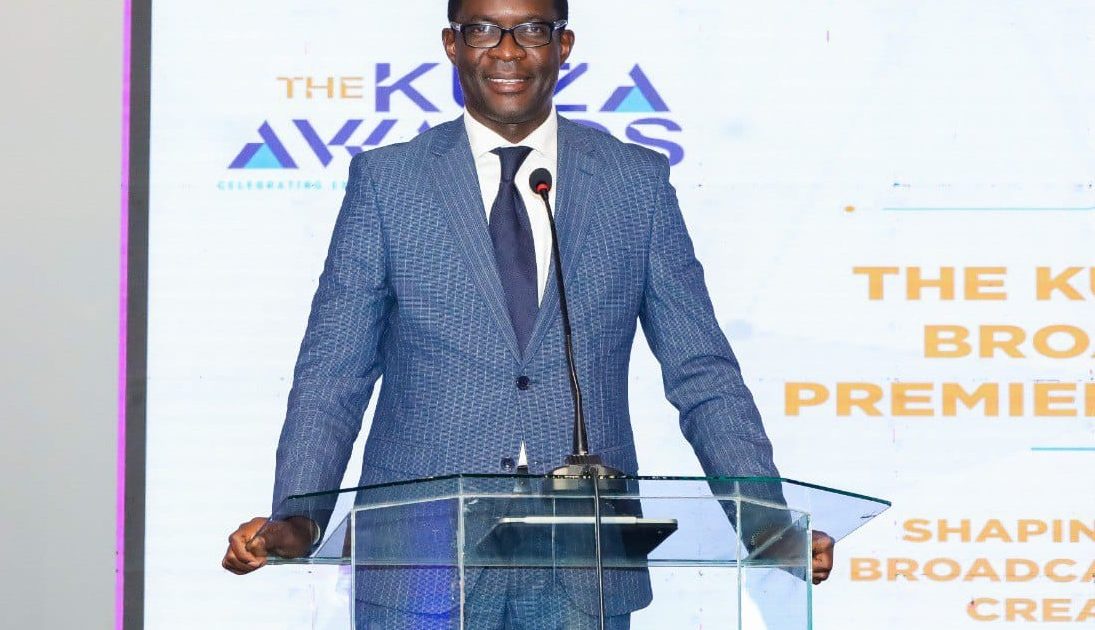The Communications Authority (CA) of Kenya has called on content creators and broadcasters to embrace the emerging technological trends in the sector in order to benefit from the infrastructure laid down through the government’s digital transformation agenda.
CA Director General (DG) Ezra Chiloba said that he is aware that a lot of the traditional broadcasters are going through difficult times especially in generating revenue from advertising because of the nature of the technological disruption being witnessed in the sector.
“The question is how the traditional media repositions itself to remain relevant and profitable in the new era,” challenged Chiloba.
Speaking on Thursday at the Mövenpick hotel during the inaugural Kuza awards Conference, Chiloba said that it is a fact that we cannot stop the present digital revolution and neither can we afford to be left behind.
“It is therefore my hope, that a platform such as what we have today, will form an avenue, to discuss the imperatives for the broadcasting industry to stay on top of this current technological disruption,” said Chiloba.
He explained that as an authority, CA is carrying out regulatory reviews to see to it that they are responding to the changes in the sector as he called for comments and ideas from players in the sector as they seek to make the sector better.
“The Authority developed The Programming Code for Radio and Television which came into force on July 1, 2016. On achieving the above milestone, CA opted for the ‘Carrot’ as opposed to the ‘Stick’ approach to enhancing compliance in the sub-sector. This is what saw the birth of the now renowned ‘KUZA’ Awards that premiered in 2017. The Awards are geared to celebrate excellence in our broadcasting industry and reward responsible broadcasting,” explained Chiloba.
The DG said that they have witnessed the number of award categories grow from a mere five in 2017 to 19 sub-categories in 2022.
“The involvement of the public has also been immense with more than 260 thousand voters having participated during the last Awards and an upward of 1.1 million votes recorded,” he said.
Chiloba said that the impact in terms of regulatory compliance has been on a positive trajectory and albeit the challenges facing the broadcasting sub-sector, they continue to uphold the important role of broadcasting in promoting socio-economic development of our country.
“The Authority has recorded significant compliance levels among broadcasters since 2017 the year when KUZA was launched. The improvement in compliance with Local content quota 40 per cent requirement has grown from 50 per cent in 2017 to the current over 90per cent. Compliance with the PWDs sign language insert requirement which stood at 70 per cent in 2017 has grown to 100 percent. The most sought for Childrens’ programming has now reached 30per cent, up from a paltry 5per cent back in 2017,” he said.
Chiloba said that the ‘watershed period’ requirement compliance level has now surpassed the 90 per cent mark.
He explained that their statistics show that as at March 2023, the Authority had licensed 306 Commercial Free to Air TV stations, this is up from 60 channels back in 2017.
“Additionally, as at March 2023, we had 243 Commercial FM radio stations up from 178 with the Pay TV experiencing a similar positive shift moving from two Service Providers to 22 Providers,” said Chiloba.
He explained that the Authority has initiated the process of developing a framework to introduce Digital Sound Broadcasting in Kenya. This initiative is intended to ensure efficient utilization of the scarce broadcasting spectrum and satisfy the growing demand for radio broadcasting services.
“We have reached out for comments from players in the sector and we are projecting to have this operationalized within the next three years,” said Chiloba.
Kenya Film Commission Chief Executive Officer (CEO) Timothy Owase said that storytelling is the future of the creative and broadcasting sector where there are many Kenyan stories that need to be told.
Owase said that there is need for industry players, be it broadcasters, producers, regulators and others to work together for them to achieve a greater good for everyone.
“The future is very bright for this sector, producers are looking for avenues to air their content be it through the digital, traditional and emerging technology and there is need for collaboration so that everyone participates in the growth of the industry,” said Owase.
By Joseph Ng’ang’a





